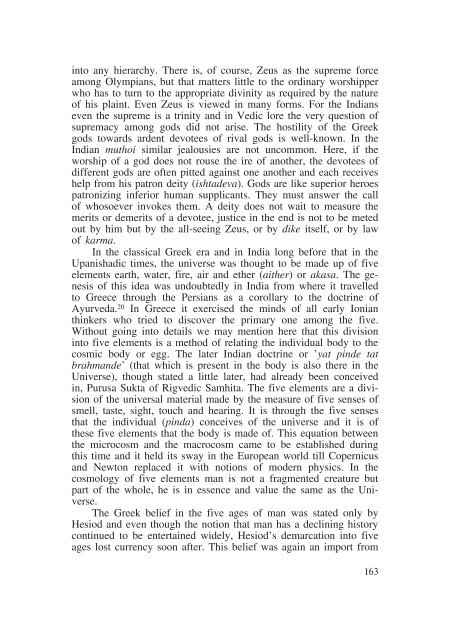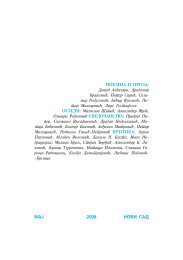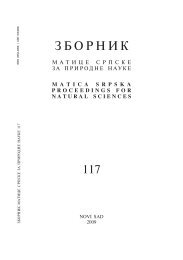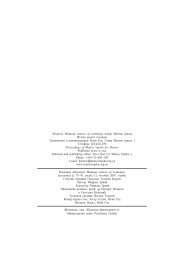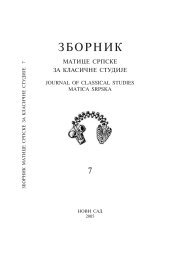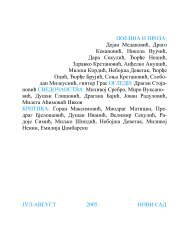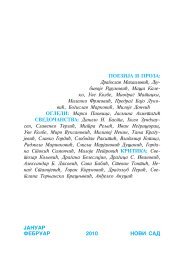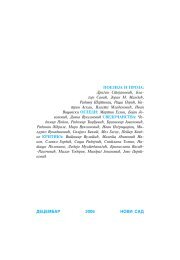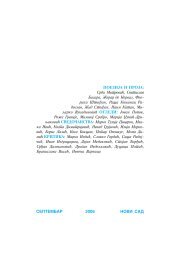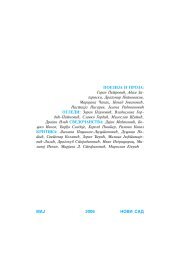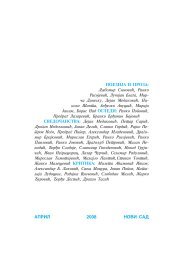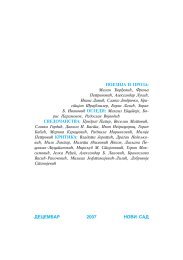Create successful ePaper yourself
Turn your PDF publications into a flip-book with our unique Google optimized e-Paper software.
into any hierarchy. There is, of course, Zeus as the supreme force<br />
among Olympians, but that matters little to the ordinary worshipper<br />
who has to turn to the appropriate divinity as required by the nature<br />
of his plaint. Even Zeus is viewed in many forms. For the Indians<br />
even the supreme is a trinity and in Vedic lore the very question of<br />
supremacy among gods did not arise. The hostility of the Greek<br />
gods towards ardent devotees of rival gods is well-known. In the<br />
Indian muthoi similar jealousies are not uncommon. Here, if the<br />
worship of a god does not rouse the ire of another, the devotees of<br />
different gods are often pitted against one another and each receives<br />
help from his patron deity (ishtadeva). Gods are like superior heroes<br />
patronizing inferior human supplicants. They must answer the call<br />
of whosoever invokes them. A deity does not wait to measure the<br />
merits or demerits of a devotee, justice in the end is not to be meted<br />
out by him but by the all-seeing Zeus, or by dike itself, or by law<br />
of karma.<br />
In the classical Greek era and in India long before that in the<br />
Upanishadic times, the universe was thought to be made up of five<br />
elements earth, water, fire, air and ether (aither) orakasa. The genesis<br />
of this idea was undoubtedly in India from where it travelled<br />
to Greece through the Persians as a corollary to the doctrine of<br />
Ayurveda. 20 In Greece it exercised the minds of all early Ionian<br />
thinkers who tried to discover the primary one among the five.<br />
Without going into details we may mention here that this division<br />
into five elements is a method of relating the individual body to the<br />
cosmic body or egg. The later Indian doctrine or 'yat pinde tat<br />
brahmande' (that which is present in the body is also there in the<br />
Universe), though stated a little later, had already been conceived<br />
in, Purusa Sukta of Rigvedic Samhita. The five elements are a division<br />
of the universal material made by the measure of five senses of<br />
smell, taste, sight, touch and hearing. It is through the five senses<br />
that the individual (pinda) conceives of the universe and it is of<br />
these five elements that the body is made of. This equation between<br />
the microcosm and the macrocosm came to be established during<br />
this time and it held its sway in the European world till Copernicus<br />
and Newton replaced it with notions of modern physics. In the<br />
cosmology of five elements man is not a fragmented creature but<br />
part of the whole, he is in essence and value the same as the Universe.<br />
The Greek belief in the five ages of man was stated only by<br />
Hesiod and even though the notion that man has a declining history<br />
continued to be entertained widely, Hesiod's demarcation into five<br />
ages lost currency soon after. This belief was again an import from<br />
163


